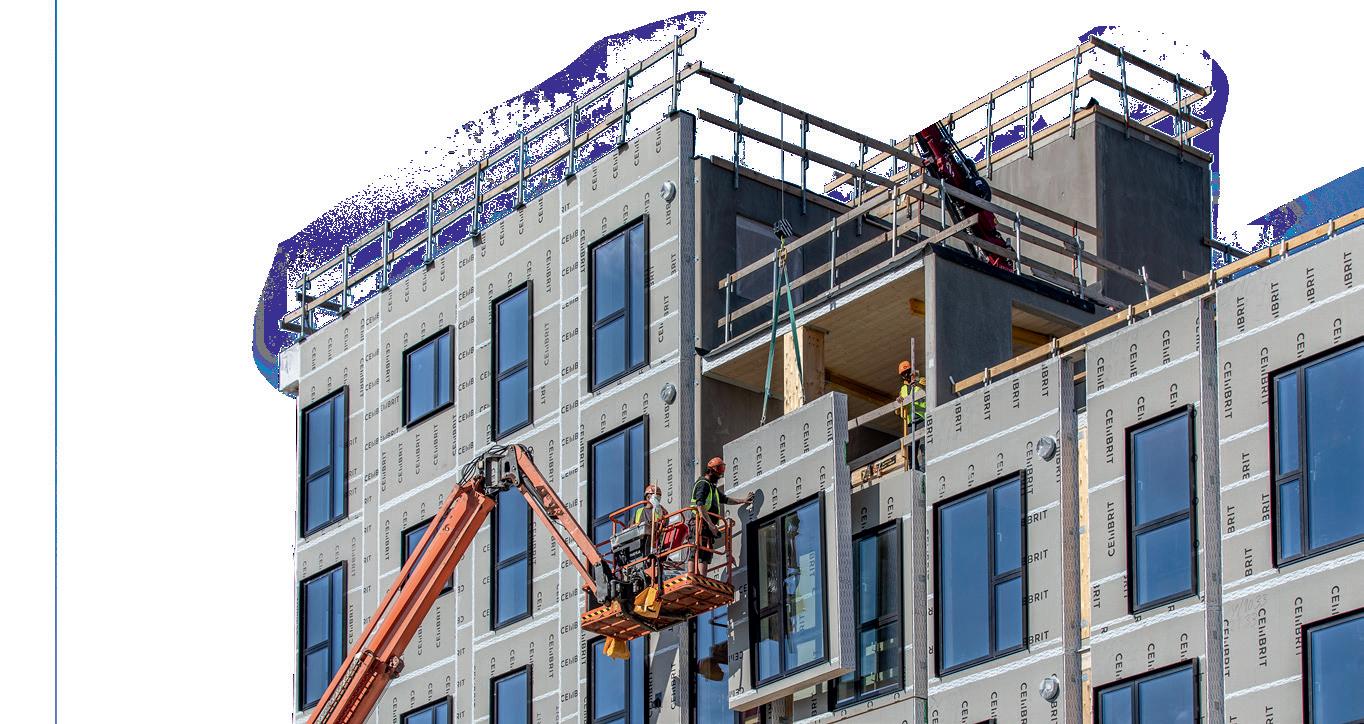
2 minute read
Denmark’s only storage facility for nuclear waste
Security is the keynote in everything we do at Risø.
We have looked at a total of 27 scenarios and calculated the probability related to each of them.
Advertisement
Together with the architects from Christensen & Co Architects and Langebæk, we help Danish Decommissioning realise a project that reaches far into the future and had its starting point all the way back in the 1950s. The project is a new storage facility where all of Denmark's radioactive waste must be stored until 2073 at the latest, and a large part of the waste has an interesting history.
We must go back to 1955, when the commission for nuclear energy, headed by Danish physicist Niels Bohr, was responsible for establishing a public research centre with focus on promoting the use of nuclear energy for peaceful purposes. In the years that followed, three test reactors were built, but as is it turned out, Danish nuclear power never progressed beyond the test stage. Popular opposition to nuclear power grew throughout the 1970s, and in 1985, it was completely taken out of Danish energy planning. However, under the name Forskningscenter Risø, two reactors were used for teaching and research right up until the year 2000.
In 2003, Danish Decommissioning was established as a state enterprise which since then has been responsible for dismantling the nuclear facilities and handling all radioactive waste in Denmark. The remains from the test reactors constitute the largest part, but radioactive materials from hospitals, enterprises, etc., are also handled. In addition, certain fire alarms are good examples of radioactive waste.
It is still uncertain where a final repository for the waste will be placed, and it has therefore been decided instead to establish a warehouse on the peninsula Risø, which will require the special storage facility that we are now helping to establish.

A secure facility
The project consists of three buildings : The main storage building of 8,736 m2, a gatekeeper building and an unheated storage facility for the so-called NORM waste which is already in Danish Decommissioning’s possession. Project Manager and Head of Risk & Security Willy Paulsen explains that there is one dominating factor that characterises the project in every detail :
Security is the keynote in everything we do at Risø, and it has resulted in a number of very unique engineering tasks and technical challenges. We work with a risk and security assessment which will end up providing
Danish Decommissioning with a license to operate the new upgraded storage facility. The risk and security assessment takes various scenarios into account, and many of the considerations will have an effect on the design. On one hand, we want to protect the buildings from illegal trespassing with advanced access control and several confidential initiatives and on the other hand, we have an eye on accidental incidents such as flood or in worst case plane crash.
One of the people who have participated in the assessment of the many scenarios and their probabilities is Karlotta Thórhallsdóttir who has experienced the project as exciting and out of the ordinary :
It is actually an academic excise where we have researched our way to historical data in very different areas. I have dived into a great many subjects, and we have, of course, had to look at empirical data on a global scale to have reasonable grounds for our presumptions. A large part of the risk evaluation also consists of technical analyses that our own specialists have been responsible for. We have looked at a total of 27 scenarios and calculated the probability related to each of them.














